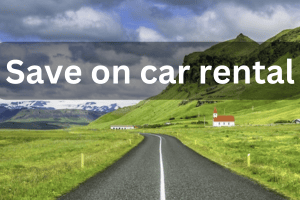Free and exclusive discount codes for hundreds of tours and & travel services in Iceland
Subscribe to instantly receive discount codes for tours, car rental, camper van rental, and outdoor clothing rental. Thank you! ❤️ Jon Heidar, Editor of Stuck in Iceland Travel MagazineSustainability has become a cornerstone of responsible tourism, especially in a country as breathtakingly beautiful yet ecologically fragile as Iceland. There are few better people equipped to deep-dive into the topic of how visitors to Iceland can travel in a way that is mindful of Mother Earth than sustainability travel professional María Ester Guðjónsdóttir.

She has obtained certifications from the Global Sustainable Tourism Council in sustainable tourism and as a hotel auditor. Soon, she will receive her license to audit travel agencies and tour operators. Recently, she launched a website in Icelandic dedicated to Sustainable Tourism. It is an important resource for Icelandic travel companies that want to make their operations and services as eco-friendly as possible. So here are great tips for sustainable travel in Iceland.
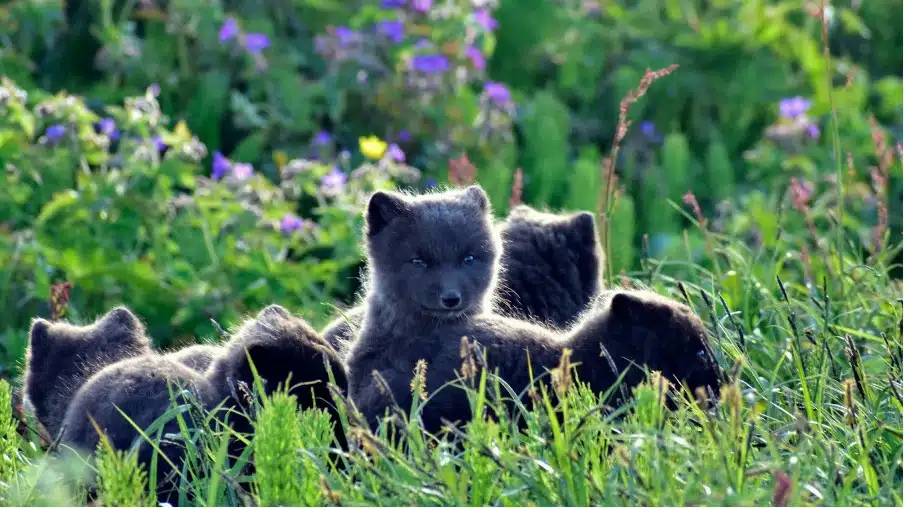
We used to be colleagues. A few years ago, we worked together at Iceland Travel, so I have known her for a while. Her effort to accumulate expertise in the ever-growing field of sustainable traveling has impressed me. After all, sustainability is a complex field that affects all aspects of how a business operates or how people go about their everyday lives. Although many Icelandic travel companies have prioritized sustainability, we need more professionals to guide our travel industry’s sustainability journey. Her vision aligns perfectly with the growing desire among travelers to leave a lighter footprint while exploring Iceland’s natural wonders.
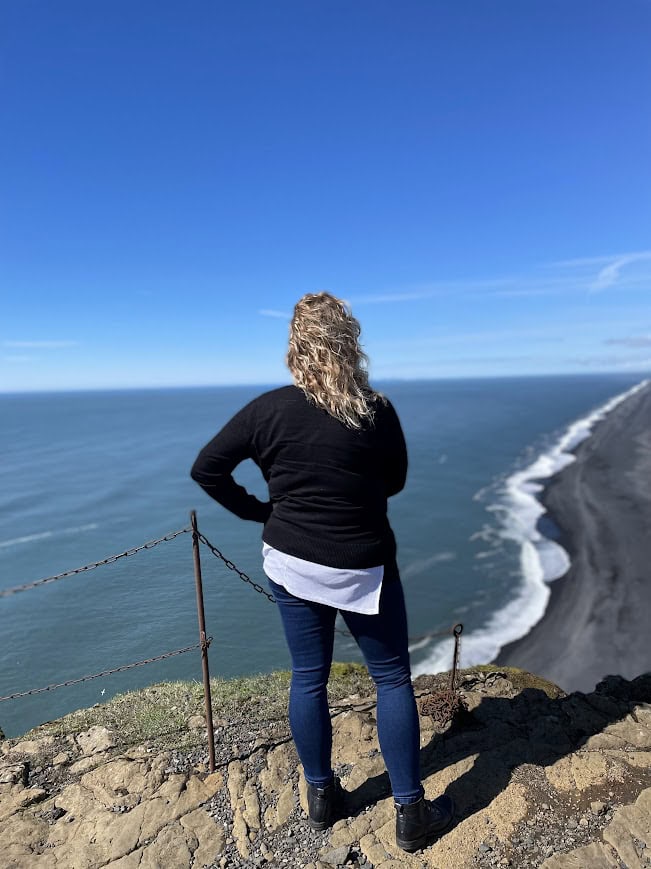
In this interview, we’ll dive into actionable advice for travelers who want to experience Iceland while preserving its pristine landscapes. From tips on choosing sustainable accommodations to insights on low-impact activities, María Ester will help you navigate Iceland with the planet in mind.
Hey, María Ester, thank you for taking the time for this interview. Can you share what inspired your passion for sustainability in the travel industry
Hi Jón Heiðar, and thank you so much for inviting me to this interview and helping me raise awareness about sustainable tourism in Iceland.
My passion for sustainability stems from growing up in Iceland, where I have witnessed the effects of climate change firsthand. This includes retreating glaciers, shifting weather patterns, and changes in vegetation. This is due to human activity, which includes mass tourism and increased human activity. This has made me deeply aware of how fragile and precious our environment is.
Having worked in the traveling industry for over a decade, I wanted to make a difference and help people become more mindful of their impact. I’ve seen how sustainable practices can protect the environment, support local communities, and ensure that tourism can thrive without compromising the future. This journey led me to pursue certifications and become an advocate for sustainable tourism, empowering others to make eco-friendly choices that truly matter.
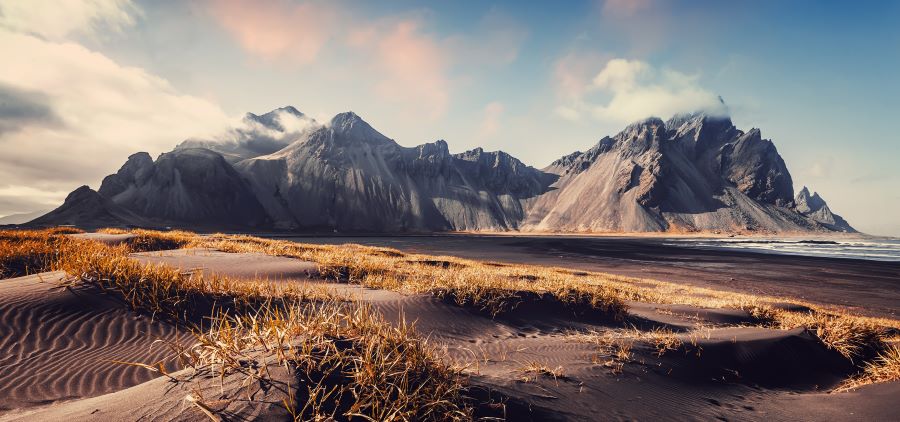
What are the main tips for sustainable travel in Iceland?
That’s a great question! Visitors can take many steps to minimize their impact by making thoughtful decisions before they even arrive and continuing to be mindful during their stay. From choosing sustainability-certified businesses to respecting nature and supporting local communities, small actions can make a big difference in preserving Iceland’s unique environment and culture.
Research and support sustainable travel companies in Iceland
Before traveling, learn about Iceland’s unique environment, customs, and sustainable tourism practices. Choose accommodations, tours, and services that are sustainability-certified. Not only do these businesses prioritize environmental care, but they also ensure their employees are treated fairly and work in ethical conditions.
Travel on the off-peak season and explore less-known areas
Consider visiting Iceland during less busy times of the year to reduce pressure on popular attractions. You might also find better prices and a more relaxed experience. Be open to exploring less-crowded destinations—countless stunning landscapes and hidden gems off the beaten path offer peaceful, authentic experiences while alleviating strain on over-visited sites.
Choose locally produced souvenirs
Check the label—was the item made in Iceland? Are you supporting local producers? Some stores sell “Icelandic” products that are not made in Iceland. Supporting genuine local goods helps sustain communities and reduces the carbon footprint of imported items.
Respect nature
Stick to marked paths, follow guidelines at natural sites, and avoid actions that could harm fragile ecosystems, such as disturbing wildlife or trampling vegetation. Always take your trash with you, as bins may not be available in remote areas. Sort and recycle your waste when you return to towns or cities to help keep Iceland’s landscapes pristine.
Editor’s note: off-road driving is strictly forbidden in Iceland.
Drink kranavatn
Bring a reusable water bottle and fill it with Iceland’s pure, drinkable tap water—known as Kranavatn. It’s among the best tap water in the world and available for free at any tap. This simple step helps eliminate the need for single-use plastic bottles. Learn more at kranavatn.inspiredbyiceland.com.
Be respectful of locals and their customs
Take time to understand Icelandic traditions and culture. Always ask permission before taking photos of people, their homes, or places like swimming pools. Privacy is deeply valued in Iceland, and respecting these boundaries ensures positive and meaningful interactions with the community.
Mindful Transportation Choices
While public transportation in Iceland is limited, a bus network circles the country. For more flexibility, consider renting an electric car to reduce emissions. However, keep Iceland’s challenging conditions in mind—its mountains, hills, and unpredictable weather require careful planning. If you plan to bike, be well-prepared for the terrain and changing weather conditions.
By following these tips, visitors can enjoy Iceland’s unparalleled beauty while helping to preserve its landscapes, culture, and communities for generations to come.
What common mistakes do travelers make that negatively impact Iceland’s environment?
It would be greatly appreciated if travelers embraced the principle of “make memories, take photos, and leave only footprints”—and even then, only footprints on designated paths. These paths exist to protect Iceland’s fragile ecosystems and ensure visitor safety. Venturing off them, even for the perfect selfie or picture, can cause long-lasting damage to delicate vegetation and soil, which may take decades to recover. Additionally, stepping off-trail can be dangerous, as some areas have unstable terrain or hidden hazards.
Another important reminder: don’t take rocks, sand, or other natural materials as souvenirs. These are part of Iceland’s unique and pristine landscapes and should remain for future generations. Removing them disrupts the natural environment and can have unintended consequences on fragile ecosystems.
By respecting these principles and making mindful choices, travelers can help preserve Iceland’s extraordinary beauty while creating meaningful memories. For more sustainable travel tips, explore the advice shared above.
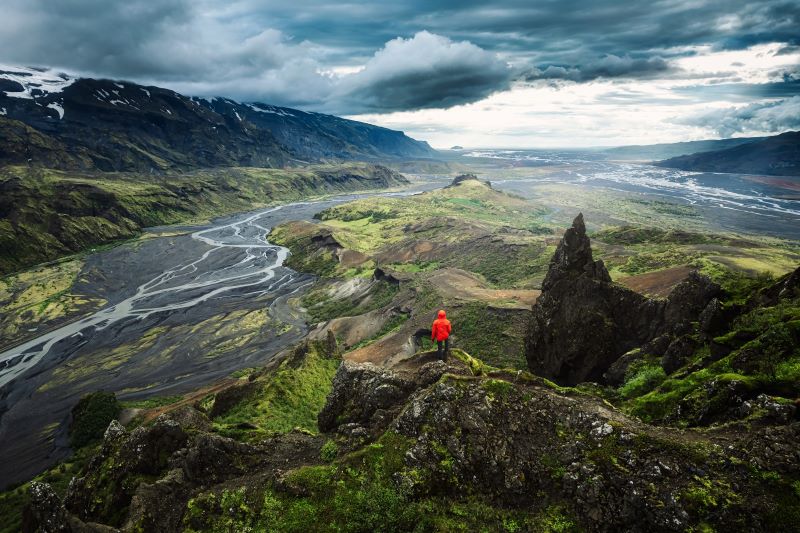
at Thorsmork in Iceland.
How can I find eco-friendly accommodations or tour operators in Iceland?
There are several ways to find eco-friendly accommodations and tour operators in Iceland.
Accommodations in Iceland with Green Key Certification
Green Key-certified accommodations meet strict environmental standards. You can view a map of all certified properties here: Green Key Global. For example, many (if not all) Fosshotels across Iceland hold this certification.
Sustainable hotel options in Iceland on Booking.com
When using Booking.com, you can filter results to show accommodations with sustainable certifications. This makes it easier to find hotels that prioritize eco-friendly practices.
Travelife Certified Travel Agencies in Iceland
Travelife is an international certification system for sustainability in tourism. Certified Icelandic companies include:
Iceland Travel
Nordic Visitor
You can explore more certified companies here: Travelife Certified Companies.
VAKINN Certification
The Icelandic government’s official quality and environmental certification system for tourism is called VAKINN. While there aren’t many certified companies yet, it’s worth checking the list of VAKINN Certified Companies.
Consider certification and veyond
While certifications like Green Key, Travelife, and VAKINN are great indicators of a company’s commitment to sustainability, many other certification systems are available, depending on the company’s focus. However, it’s just as important to look beyond the certification. Research the company’s values and actions to see how they approach sustainability. Certifications are helpful, but the real impact often lies in what the business does to reduce its environmental and social footprint.
Iceland’s smaller accommodations and tour operators are committed to sustainable practices but may not yet have third-party certifications. This is where good research becomes essential. Look for companies highlighting their sustainable efforts on their websites or social media.
Be curious and ask questions
If you’re unsure about a company’s sustainability practices, don’t hesitate to email them. Asking about their efforts shows your interest in supporting eco-friendly practices and helps you make informed decisions.
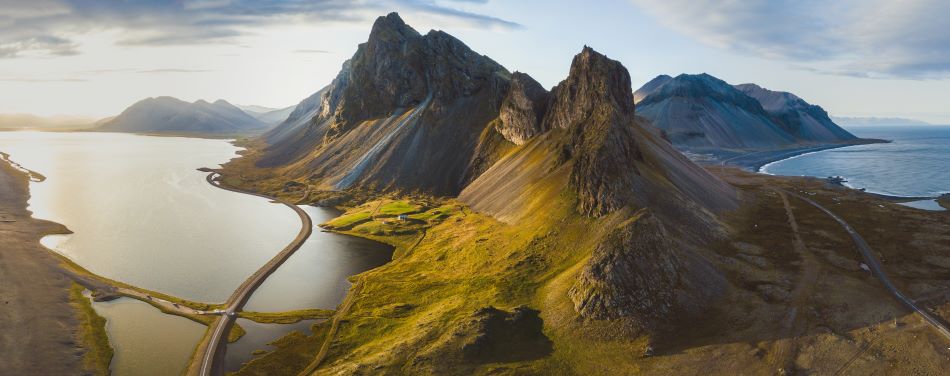
Are there specific regions or activities in Iceland better suited for eco-conscious travelers?
In my opinion, there isn’t one specific region that stands out as better for eco-conscious travelers—all of Iceland is beautiful and deserves exploration. However, I recommend venturing beyond the city and towns into the rural areas. These regions offer unique opportunities to experience untouched landscapes and connect with local communities while helping to distribute tourism benefits more evenly.
For activities, nature-focused experiences with a low carbon footprint are an excellent choice. Walking tours, hikes, and kayaking allow travelers to enjoy Iceland’s stunning scenery in an environmentally friendly way. Animal-friendly options, such as responsible whale watching or bird-watching, provide unforgettable experiences while respecting wildlife.
By choosing thoughtful activities and exploring beyond urban centers, travelers can enjoy Iceland’s wonders while contributing to a more sustainable and balanced travel industry.
What obstacles do travel companies face in their journey to offer sustainable travel in Iceland?
One significant challenge is the awareness and knowledge gap. This is particularly true for smaller businesses and those in rural areas. These businesses often operate with fewer employees, limited resources, and lower income than larger chains. As a result, they may lack the capacity to dedicate a staff member solely to sustainability or the expertise needed to navigate complex sustainable practices.
Another obstacle could be the cost of certifications for sustainable travel in Iceland, which can be prohibitive for small businesses. Achieving sustainability certifications often involves paying for an auditor and covering associated expenses like travel and accommodation for the audit process. These costs can be a significant barrier, especially for companies already working with tight budgets.
This does not mean these businesses aren’t already doing great things. Many small companies implement excellent sustainable practices, even if they lack the resources or certification to showcase their efforts formally. Supporting these businesses by increasing access to knowledge, reducing barriers to certification, and celebrating their contributions is essential for fostering a more sustainable tourism industry across Iceland.
What future trends in sustainable travel in Iceland do you see emerging?
Iceland’s commitment to sustainable tourism advanced with the Tourism Policy and Action Plan to 2030, approved in June 2024. With a new government taking office in December 2024, it will be exciting to see how these plans unfold.
One significant development is the increase in flights to Akureyri, making North Iceland more accessible. This helps distribute visitors more evenly, showcasing the region’s stunning attractions like Lake Mývatn and Dettifoss while reducing strain on Reykjavík and the south. Encouraging off-season travel is also gaining momentum, highlighting activities like Northern Lights tours and ice caving, which support local businesses year-round and ease pressure on summer hotspots.
The rise of low-carbon options helps sustainable travel in Iceland. This includes electric vehicle rentals, carbon-neutral tours, and carbon offset programs, helping reduce tourism’s environmental footprint. Increasing awareness, clear instructions, and accessible information for companies and travelers will empower everyone to make more sustainable choices, ensuring Iceland’s natural and cultural treasures are preserved for future generations.


